Flying with a service dog might feel overwhelming, particularly considering the recent alterations to the Department of Transportation (DOT) regulations. However, fear not; the Trips to Discover team is here to assist you! We have consulted with experienced service dog travelers and service dog education experts to create a comprehensive guide that encompasses all the essential information for flying with your service dog.
Whether you are a novice flyer or a seasoned service dog traveler, our guide incorporates the latest updates on the Air Carrier Access Act (ACAA), Americans with Disabilities Act (ADA), and individual airline policies. So, sit back, relax, and let us aid you in making your next flight with your service dog a seamless experience!
Service Dog Definition And Airplane Eligibility Are Crucial Topics To Address.
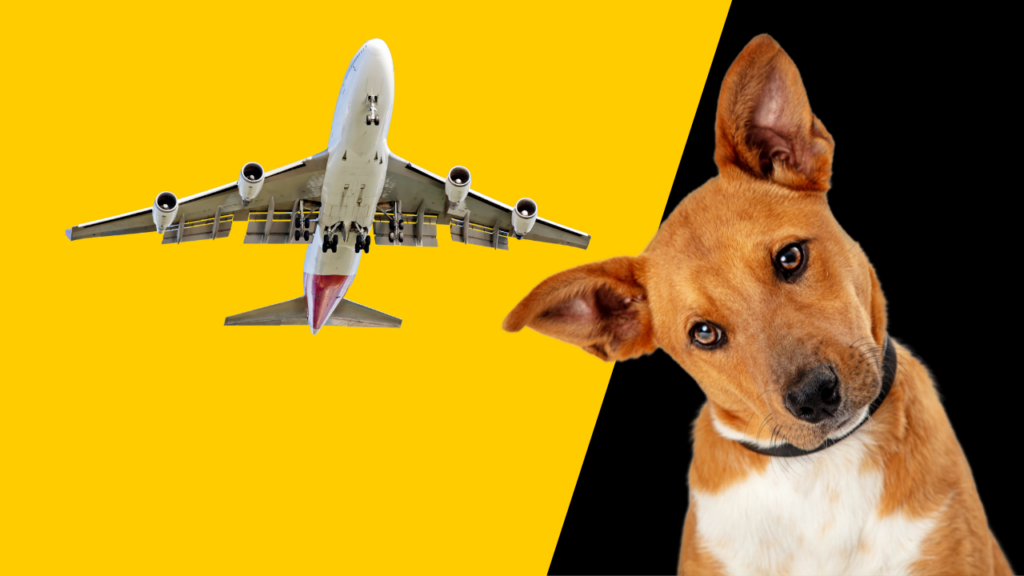
As per the Americans with Disabilities Act (ADA), a service animal in the United States is restricted to dogs that are individually trained to perform specific tasks for a person with a disability. Conversely, emotional support, therapy, comfort, or companion animals offer comfort solely through their presence and do not undergo specialized training to perform tasks for individuals with disabilities, unlike service dogs.
It’s important to note that emotional support animals (ESAs) and psychiatric service dogs (PSDs) are distinct from each other. PSDs are service dogs trained to take precise actions to help an individual avoid certain mental health symptoms. The ADA offers an illustrative example to differentiate between the two.
According to the ADA, if a dog is trained to sense an impending anxiety attack and takes specific actions to prevent or lessen its impact, it is considered a service animal.
In 2021, the Department of Transportation (DOT) made amendments to the Air Carrier Access Act (ACAA) to align its definition of service animals with the Department of Justice’s (DOJ) definition in the ADA.
Following this ruling, only service dogs are permitted to travel on planes, and no other “service” animal is allowed to board an aircraft. It’s worth noting that the terms “service animal” and “service dog” are synonymous in the eyes of the ACAA and ADA, as only dogs can qualify as service animals.
Service Dog Training Requirements for Flying
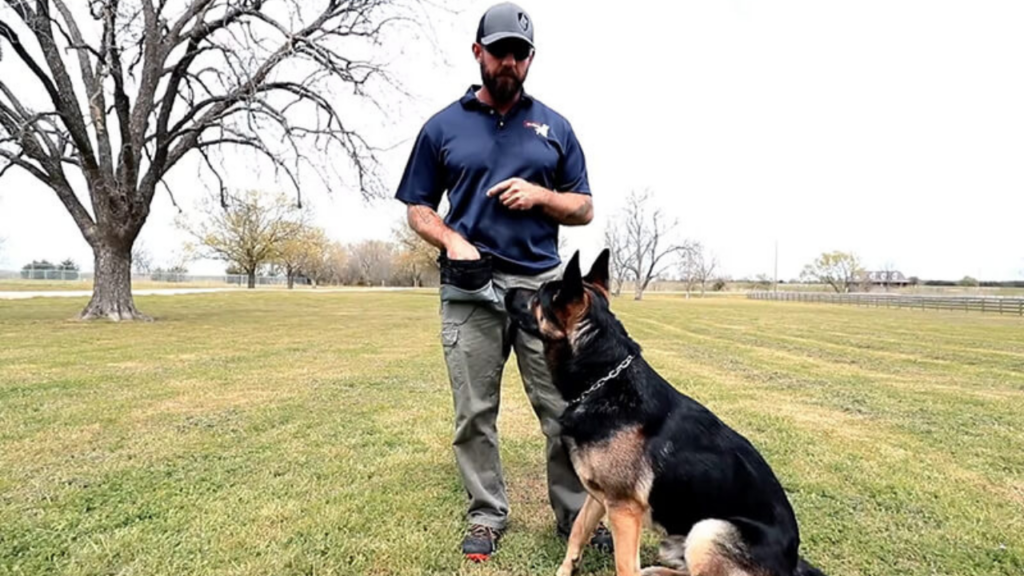
According to the Department of Transportation (DOT), service dogs do not necessarily require professional training, and individuals are allowed to train them on their own. However, preparing your dog to become a service dog can be a challenging task. Rover, a company specializing in dog walking and sitting, offers some helpful tips for those who wish to independently train their dogs as service dogs.
As per the Americans with Disabilities Act (ADA), the primary criterion for service dogs is that they must be trained to perform specific tasks directly related to the disability of their owner and nobody else’s.
For instance, a person with diabetes may have a dog trained to alert them when their blood sugar levels become too high or too low. Similarly, someone with depression may have a dog trained to remind them to take their medication. Furthermore, a person with epilepsy might have a dog trained to detect the onset of a seizure and assist them in remaining safe during the episode.
These service dogs must possess the ability to entirely focus on their owner and disregard any other distractions. For further information on registering a service dog, you can refer to the educational resource provided by Service Dog Certification.
Breed Restrictions and Flying With Large Service Dogs
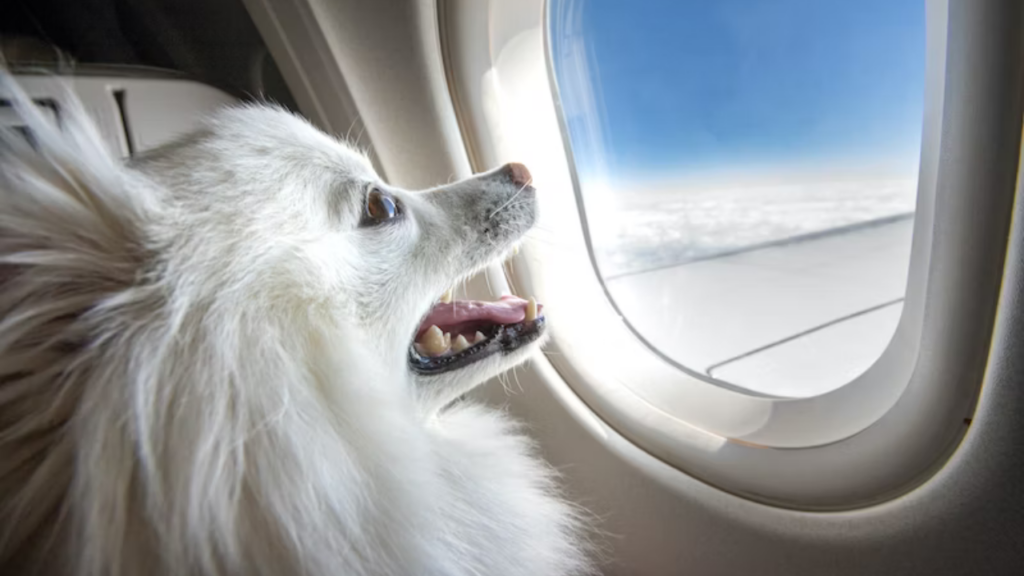
The Department of Transportation (DOT) does not impose breed restrictions on service dogs; the only requirement is that service animals must be dogs. This means that breeds such as Pitbulls, Rottweilers, or Huskies can also serve as service dogs, provided they are individually trained to assist an individual with a specific task related to their disability.
While the DOT does not specify weight or size limits for service dogs traveling on aircraft, some carriers may request that a service animal sits on the passenger’s lap or within their foot space during the flight. Many airlines choose to enforce this requirement, effectively setting a size restriction for large dogs inside the cabin, as it would be impractical to accommodate a Great Dane service dog within a standard seat’s floor space.
Nevertheless, the Air Carrier Access Act (ACAA) mandates that airlines must find ways to accommodate large service dogs, even if it means relocating the passenger and the dog to another seat within the same service class, preferably one with an adjacent empty seat.
If no suitable alternative is available, airlines are required to offer free transportation service for the service dog in the cargo hold or provide booking on a later flight with more available space. To avoid any issues with the airline attempting to check your large service dog, you can proactively purchase an additional seat in advance, ensuring that the airline accommodates your large service dog inside the cabin.
New Rules for Flying With a Service Dog
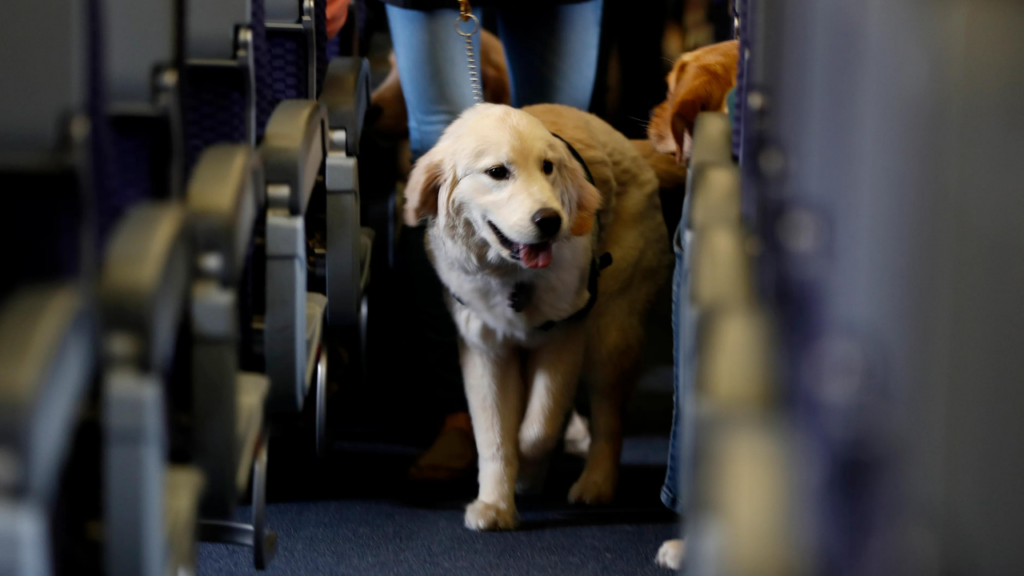
On January 11, 2021, the Department of Transportation (DOT) implemented a significant overhaul to the Air Carrier Access Act (ACAA) regulations regarding service animals aboard airplanes. Below are the key provisions of the new regulations:
- Only dogs are recognized as service animals; no other species qualify.
- Emotional support animals are no longer considered service animals.
- Passengers with disabilities are allowed a maximum of two service animals on the plane.
- Airlines may require that service animals fit within a passenger’s foot space or on their lap if they are small enough.
- Psychiatric service dogs have the same privileges as other service dogs.
- Airlines have the authority to request passengers to fill out the DOT’s Service Animal Air Transportation Form (SAATF).
- For flights lasting eight hours or longer, airlines can require passengers to complete the Service Animal Relief Attestation Form (SARAF).
- If a passenger makes a reservation more than 48 hours before the flight, airlines can request the submission of either of the two forms mentioned above at least 48 hours before the flight.
- If a reservation is made within 48 hours of the flight, airlines cannot demand advance documentation and must permit passengers to present the forms at the departure gate.
- Airlines may require service animals to be harnessed, leashed, or tethered while in airport spaces they own, lease, or control, including the aircraft.
These regulations aim to provide clear guidelines for the recognition and management of service animals on flights, ensuring a smoother and more consistent experience for both passengers with disabilities and airlines.
Service Dog Rights and Laws When Flying
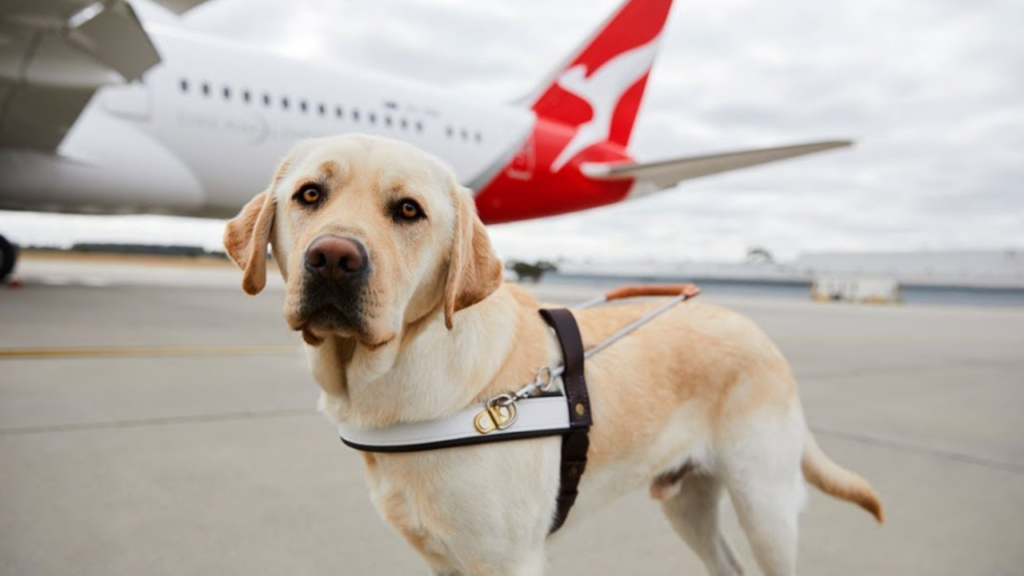
In the U.S., knowing your rights and responsibilities as a traveler with a service animal is crucial, according to Jane Jones, a frequent traveler with her service dog. She highlighted two key pieces of legislation that primarily concern service dog travelers: the Americans with Disabilities Act (ADA) and the Air Carrier Access Act (ACAA) regulations.
These laws ensure that service animals are allowed to accompany their handlers in public places and on airlines, respectively. However, it’s essential to note that emotional support animals are not considered service animals under either the ADA or the ACAA.
Arthur Salisbury, who frequently travels with his 5-year-old pit bull service dog named Horus, emphasized the importance of staying informed about service dog rules and regulations, particularly due to the stigma surrounding pit bulls. He mentioned some additional legalities and rights that people traveling with service animals should be aware of.
Airlines are obligated to allow service animals to travel in the cabin of the aircraft alongside their handlers, without any additional charges. Additionally, businesses and airlines are allowed to ask two questions to verify the status of a service dog, according to Salisbury:
- Is the animal a service animal required because of a disability?
- What work or task has the animal been trained to perform?
However, businesses cannot inquire about the person’s disability, demand special identification for the animal, or impose extra fees for the service animal’s presence. Salisbury emphasized that laws and regulations regarding service animals may vary by country, so it’s essential to research the laws and policies of your travel destination before embarking on your journey.
TSA and Airport Service Dog Policies
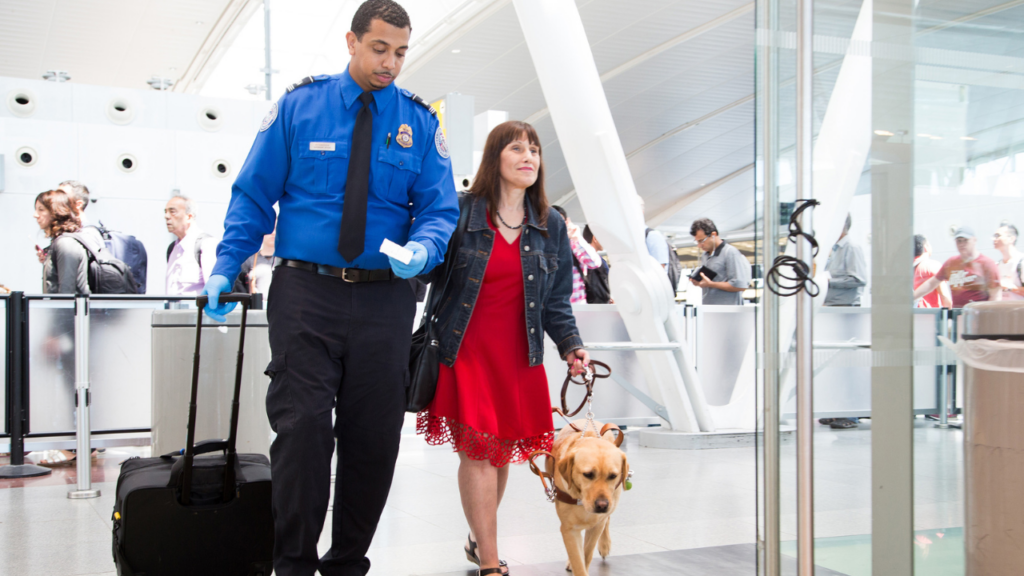
According to Salisbury, flying with a service dog offers a unique experience, but with proper preparation and knowledge, it can be a smooth journey.
He advises travelers to make advance reservations and inform the airline about their service dog when booking the flight. This allows the airline to make necessary accommodations and ensure sufficient space for the animal onboard.
Nina Clapperton, a seasoned traveler with a service dog and the founder of Traveling With Your Pets, is well-informed about the laws, regulations, and best practices for traveling with service animals. Clapperton suggests preparing for additional screenings at the security checkpoint.
To ensure a smoother process, Clapperton recommends arriving early at the airport and notifying the airline of the service dog’s presence during booking or check-in. During security screening, travelers should inform the TSA officer if their dog requires any special accommodations. Some airports have designated relief areas specifically for service animals.
Salisbury further advises travelers to pack all necessary supplies for their service dog, including food, water, waste bags, and comfort items. This preparation is particularly important for flight delays, layovers, or connecting flights.
At the gate, Salisbury suggests informing the gate agent about traveling with a service dog, even if the airline was already informed in advance. This helps ensure that the gate agent is aware of any necessary accommodations and can make any last-minute adjustments if needed.
American, Delta, Southwest, United Service Dog Policies
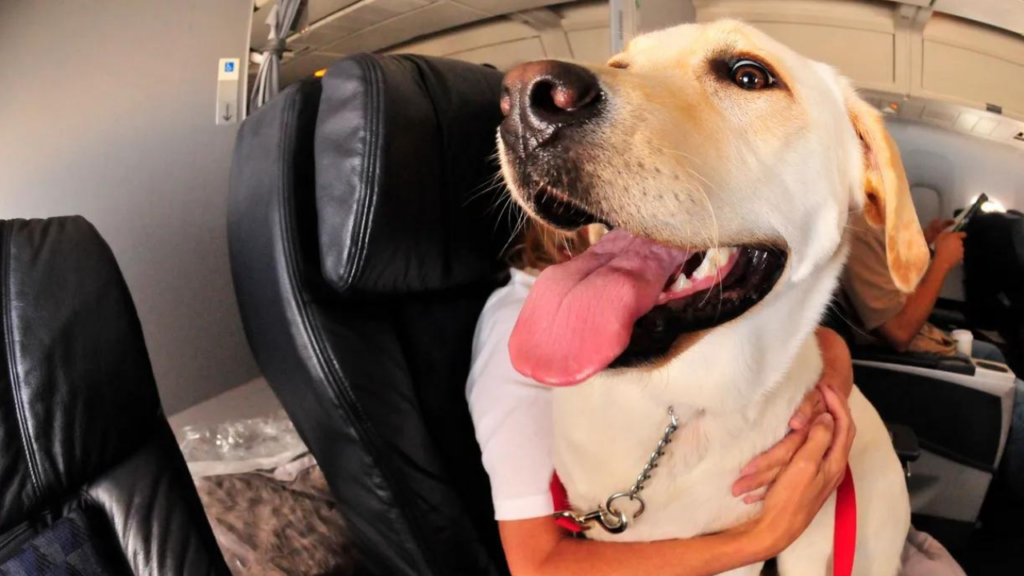
Most of the major U.S. airlines strictly adhere to the Department of Transportation’s (DOT) guidelines and allowances regarding service dogs, resulting in minimal discernible differences among individual airlines.
Below are the specific service dog policy pages for the four largest U.S. airlines, along with the links for the airline-specific Service Animal Air Transportation Form (SAATF) and Service Animal Relief Attestation Form (SARAF) forms:
- American Airlines: Submit the SAATF and SARAF on this page 48 hours before the scheduled travel time.
- Delta Airlines: Upload the SAATF and SARAF to My Trips 48 hours before the flight.
- Southwest Airlines: On the day of travel, bring the SAATF to the ticket counter or gate. It’s worth noting that Southwest Airlines is more accommodating to service dog travelers, as they don’t require the SAATF 48 hours before the flight or the SARAF for flights lasting eight hours or more.
- United Airlines: Upload the SAATF and SARAF to Trip Details 24 hours before the flight.
These airlines align their service dog policies closely with the DOT’s regulations, ensuring a consistent experience for travelers with service dogs across the major carriers in the United States.
Service Dog-Proof Airlines Can and Can Not Ask For

Airlines primarily rely on observational signs to determine whether a dog qualifies as a service dog. This includes checking for the presence of vests or harnesses and observing the dog’s behavior. Under the DOT regulations, airlines are allowed to ask passengers with disabilities if their dog is required to accompany them due to their disability. They can also inquire about the specific work or task the dog has been trained to perform.
Nina Clapperton emphasizes the significance of the two DOT forms as primary proof for travelers with service dogs. Airlines may request additional documentation, such as the DOT Service Animal Air Transportation Form or the Service Animal Relief Attestation Form.
It is advisable to check with the airline in advance to ensure compliance with their specific policies. The former form confirms that the dog is a trained service animal and not an emotional support animal (ESA), while the latter attests that the dog will not relieve itself on the plane unless in the designated relief area.
Arthur Salisbury notes that airlines can require these forms to be completed and submitted before travel, typically within 48 hours. It’s crucial to adhere to the individual airline’s policy and meet the deadline. Failure to do so may result in the airline denying boarding to the passenger and their service animal. Keeping extra copies of the completed forms while traveling is a prudent idea in case they are requested by airport or airline staff.
Clapperton clarifies that airline staff are prohibited from asking about the person’s disability, demanding documentation beyond what is allowed under the ADA, or requiring the dog to demonstrate its tasks. Travelers should be aware of their rights and advocate for themselves and their service animals if they encounter any illegal or discriminatory practices.
While not mandatory, Clapperton recommends bringing relevant documents, such as the dog’s health certificate, vaccination records, and proof of training. However, the ADA does not mandate service animals to wear vests or carry special identification.
Regarding flying, the DOT does not require service dogs to wear identifying vests either. However, carriers (airlines) are allowed to require service animals to be harnessed, leashed, or otherwise tethered in areas of the airport that they own, lease, or control, as well as on the aircraft, according to the amended ACAA.
How to Answer Questions About Your Service Dog
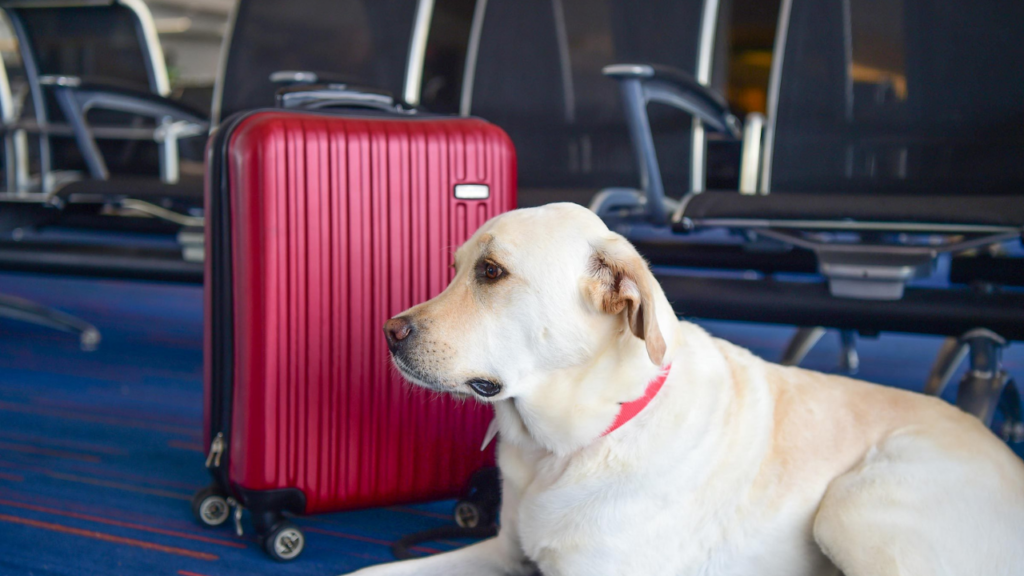
Encountering attention or questions due to the presence of a service dog can be uncomfortable and intrusive, even if within the legal boundaries of what airlines and other businesses are allowed to ask. Jane Jones suggests a few tips for handling such situations.
To manage uncomfortable interactions, Jones advises travelers to remain calm and confident in their rights as service animal handlers. Carrying a copy of the ADA and ACAA regulations can be helpful, allowing them to politely and firmly explain the rules governing service animal travel.
Arthur Salisbury points out that airline staff can only request DOT attestation documentation, namely the SAATF and SARAF. However, having certification copies on hand can help alleviate concerns in these situations. If a passenger feels that their rights as a service animal handler are being violated, Salisbury recommends elevating the issue by speaking to a supervisor.
He suggests that engaging with a Complaints Resolution Official (CRO) is another recourse. Airlines are required by the DOT to provide CROs upon request, and these individuals are experts on disability accommodation issues. If the problem persists, passengers can file a complaint online with the airline, and the airline is legally obligated to respond within 30 days. In case none of these avenues resolve the problem, passengers can file a complaint with the DOT.
Knowing these steps can empower travelers with service animals to address any issues they encounter and ensure their rights are respected throughout their journey.
What to Do if Your Service Dog is Denied Aircraft Entry
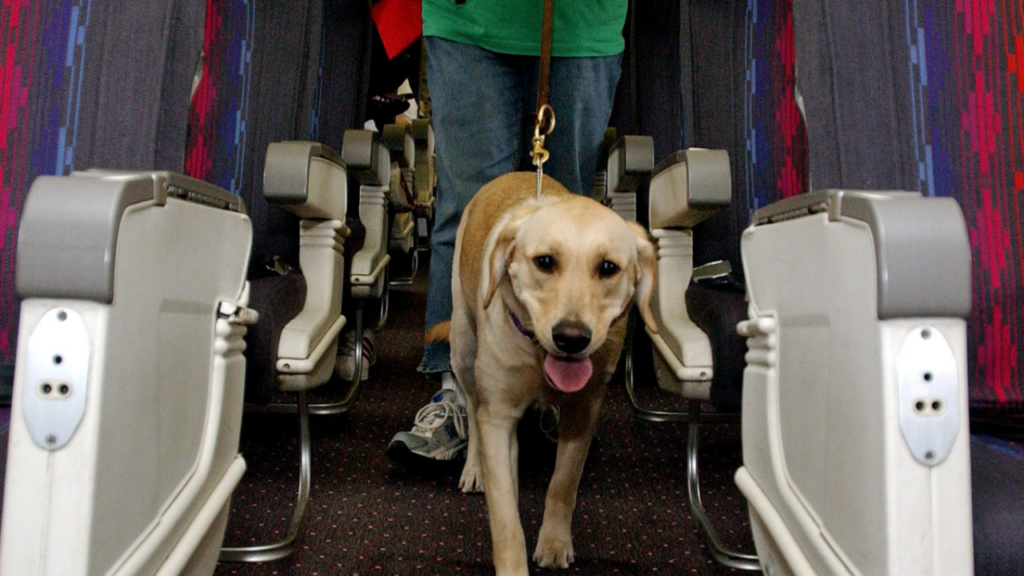
As per the DOT regulations, airlines are permitted to deny transportation of a service dog under specific circumstances. If a service dog violates safety requirements or poses a direct threat to the health and safety of others, the airline has the right to deny entry to the dog.
Additionally, if the service dog violates other health requirements, such as being prohibited from entering another country, the airline can refuse service as well. Airlines are also within their rights to deny entry if the required DOT SAATF and SARAF forms are not provided.
If a situation arises where an airline denies entry to a service dog outside the allowances mentioned above, Arthur Salisbury recommends taking an educational approach initially. The traveler should assert their rights under the Americans with Disabilities Act (ADA) and the Department of Transportation (DOT) regulations, and request that the airline comply with these rights.
Presenting the necessary documentation to demonstrate the dog’s status as a service animal is crucial. If needed, requesting to speak to a supervisor can be beneficial, as they may have more knowledge and authority to resolve the situation.
If educating airline staff does not lead to a resolution when a service dog is improperly denied entry to the aircraft, Jane Jones provides further steps to follow. The handler should ask for a written explanation of the decision to deny boarding the service animal. Additionally, the incident should be reported to the Department of Transportation (DOT) and the airline’s disability desk.
Seeking assistance from a disability rights organization can also be helpful in such circumstances. By taking these actions, travelers can advocate for their rights and address any issues regarding the entry of their service animals onto the aircraft.
Read Also:- How Early to Get to the Airport in 2023 (Guide)
Final Tips on Flying With a Service Dog
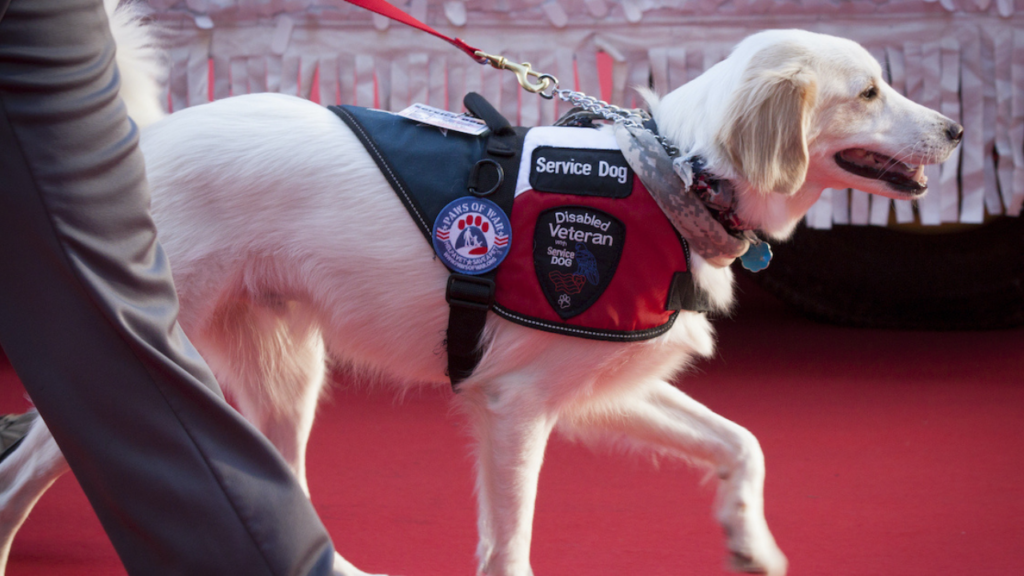
According to Arthur Salisbury, effectively managing airport navigation with a service dog starts before entering the airport. When booking your flight, it’s beneficial to inform the airline in advance that you will be traveling with a service dog. Arriving early at the airport allows for extra time to check in with the airline, go through security, and manage any other necessary processes, reducing stress for both you and your service dog.
Though not required, Salisbury recommends using a vest for your service dog. This helps airline staff readily identify your dog as a service animal, making the process smoother. It’s crucial to keep your service dog under control at all times, which may involve using a leash, harness, or appropriate equipment. Ensuring your dog is well-trained to stay calm and well-behaved in busy and noisy environments is essential.
Salisbury also advises having an emergency plan in place for your service dog. This may include identifying an emergency contact who can care for your dog if needed and having an emergency kit readily available with food, water, and any necessary medications. By being prepared and organized, you can ensure a more comfortable and seamless airport experience for both you and your service dog.


